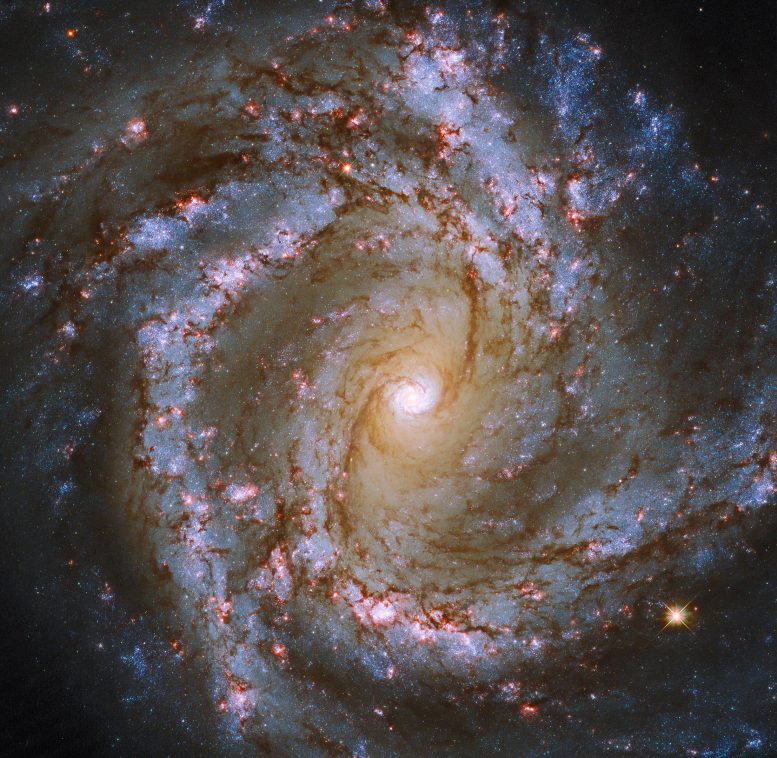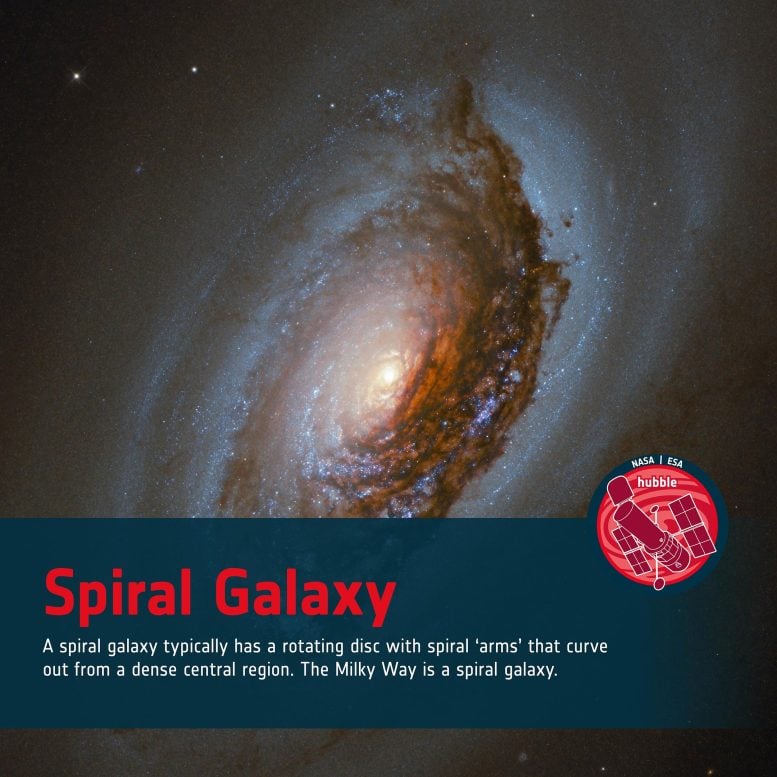
What Is a Spiral Galaxy?
A spiral galaxy typically has a rotating disc with spiral ‘arms’ that curve out from a dense central region. The Milky Way is a spiral galaxy.
Four categories are used to classify galaxies: spiral; barred spiral; elliptical and irregular. Spiral galaxies have a complex structure: a dense central bulge lies at the center of a rotating disc, which features a spiral structure that originates at the bulge. Spiral galaxies are surrounded by sparsely populated halos — roughly spherical regions above and below the plane of the discs. Barred spirals differ from normal spiral galaxies in that the arms of the galaxy do not lead all the way into the center, but are connected to the two ends of a straight bar of stars which contains the nucleus at its center. Approximately two-thirds of all spiral galaxies are thought to be barred spiral galaxies.
A spiral galaxy typically has a rotating disc with spiral ‘arms’ that curve out from a dense central region. The Milky Way is a spiral galaxy.
Classifying spiral galaxies is not always straightforward, as their appearance varies considerably depending on their orientation relative to Earth. The most visually spectacular spiral galaxies are ‘face-on’, meaning that their bulge and all their spiral arms are clearly visible. The most challenging to identify are fully ‘side-on’, meaning that only the outer edge of one side of the galaxy’s arms is visible. The Milky Way is thought to be a barred spiral galaxy. Approximately 60% of all galaxies are thought to be spiral galaxies, making spiral galaxies the home of the majority of the stars in the Universe. Spiral galaxies are populated by stars that are on average much younger than those that populate elliptical galaxies, and current thinking suggests that spiral galaxies may evolve into elliptical galaxies. Spiral galaxies rotate, and their spiral shape is not stable. A puzzle of modern astronomy is how spiral galaxies maintain their spiral arms.

Hubble has captured beautiful images of the distinctive arms and spiral features of spiral galaxies throughout its more than 30-year history. Particularly popular is the Andromeda Galaxy — a large spiral galaxy — which Hubble has observed in unprecedented detail, capturing over 100 million stars and representing a new benchmark for precision studies of this galaxy type.
Most spiral galaxies in the Universe have a bar structure in their center, and Hubble’s images of NGC 1073 and NGC 1300 offer particularly clear views of these.